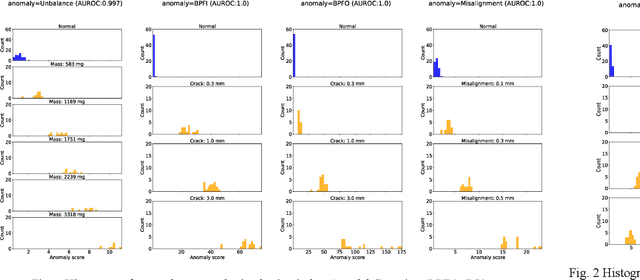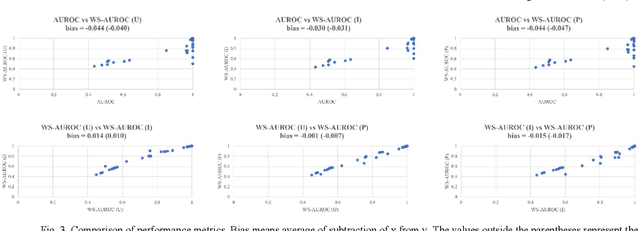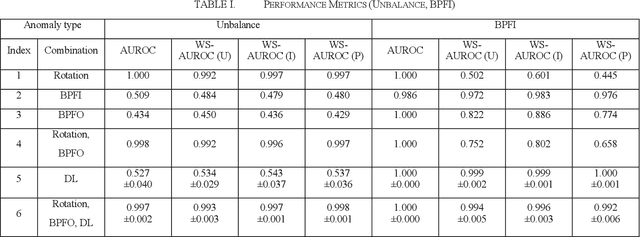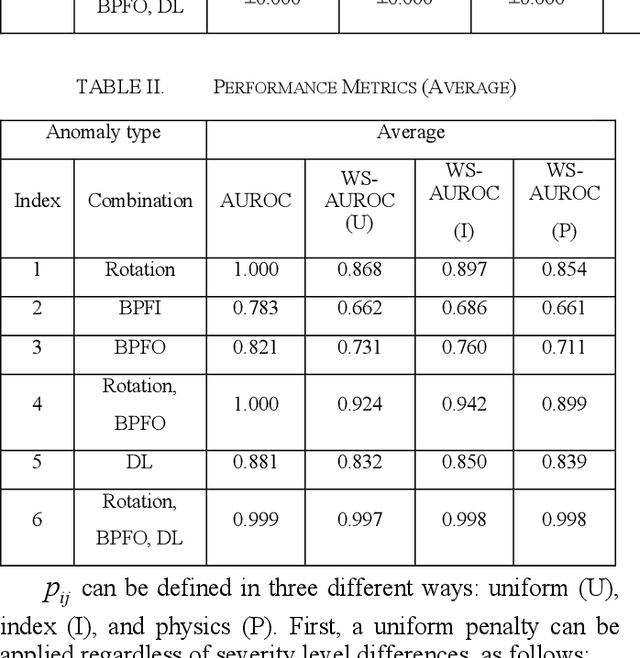Wonho Jung
Multi-output Classification using a Cross-talk Architecture for Compound Fault Diagnosis of Motors in Partially Labeled Condition
May 29, 2025Abstract:The increasing complexity of rotating machinery and the diversity of operating conditions, such as rotating speed and varying torques, have amplified the challenges in fault diagnosis in scenarios requiring domain adaptation, particularly involving compound faults. This study addresses these challenges by introducing a novel multi-output classification (MOC) framework tailored for domain adaptation in partially labeled (PL) target datasets. Unlike conventional multi-class classification (MCC) approaches, the proposed MOC framework classifies the severity levels of compound faults simultaneously. Furthermore, we explore various single-task and multi-task architectures applicable to the MOC formulation-including shared trunk and cross-talk-based designs-for compound fault diagnosis under PL conditions. Based on this investigation, we propose a novel cross-talk layer structure that enables selective information sharing across diagnostic tasks, effectively enhancing classification performance in compound fault scenarios. In addition, frequency-layer normalization was incorporated to improve domain adaptation performance on motor vibration data. Compound fault conditions were implemented using a motor-based test setup, and the proposed model was evaluated across six domain adaptation scenarios. The experimental results demonstrate its superior macro F1 performance compared to baseline models. We further showed that the proposed mode's structural advantage is more pronounced in compound fault settings through a single-fault comparison. We also found that frequency-layer normalization fits the fault diagnosis task better than conventional methods. Lastly, we discuss that this improvement primarily stems from the model's structural ability to leverage inter-fault classification task interactions, rather than from a simple increase in model parameters.
Performance Metric for Multiple Anomaly Score Distributions with Discrete Severity Levels
Aug 09, 2024



Abstract:The rise of smart factories has heightened the demand for automated maintenance, and normal-data-based anomaly detection has proved particularly effective in environments where anomaly data are scarce. This method, which does not require anomaly data during training, has prompted researchers to focus not only on detecting anomalies but also on classifying severity levels by using anomaly scores. However, the existing performance metrics, such as the area under the receiver operating characteristic curve (AUROC), do not effectively reflect the performance of models in classifying severity levels based on anomaly scores. To address this limitation, we propose the weighted sum of the area under the receiver operating characteristic curve (WS-AUROC), which combines AUROC with a penalty for severity level differences. We conducted various experiments using different penalty assignment methods: uniform penalty regardless of severity level differences, penalty based on severity level index differences, and penalty based on actual physical quantities that cause anomalies. The latter method was the most sensitive. Additionally, we propose an anomaly detector that achieves clear separation of distributions and outperforms the ablation models on the WS-AUROC and AUROC metrics.
Thermal-Infrared Remote Target Detection System for Maritime Rescue based on Data Augmentation with 3D Synthetic Data
Oct 31, 2023



Abstract:This paper proposes a thermal-infrared (TIR) remote target detection system for maritime rescue using deep learning and data augmentation. We established a self-collected TIR dataset consisting of multiple scenes imitating human rescue situations using a TIR camera (FLIR). Additionally, to address dataset scarcity and improve model robustness, a synthetic dataset from a 3D game (ARMA3) to augment the data is further collected. However, a significant domain gap exists between synthetic TIR and real TIR images. Hence, a proper domain adaptation algorithm is essential to overcome the gap. Therefore, we suggest a domain adaptation algorithm in a target-background separated manner from 3D game-to-real, based on a generative model, to address this issue. Furthermore, a segmentation network with fixed-weight kernels at the head is proposed to improve the signal-to-noise ratio (SNR) and provide weak attention, as remote TIR targets inherently suffer from unclear boundaries. Experiment results reveal that the network trained on augmented data consisting of translated synthetic and real TIR data outperforms that trained on only real TIR data by a large margin. Furthermore, the proposed segmentation model surpasses the performance of state-of-the-art segmentation methods.
Acoustic Signal based Non-Contact Ball Bearing Fault Diagnosis Using Adaptive Wavelet Denoising
Oct 07, 2021



Abstract:This paper presents a non-contact fault diagnostic method for ball bearing using adaptive wavelet denoising, statistical-spectral acoustic features, and one-dimensional (1D) convolutional neural networks (CNN). The health conditions of the ball bearing are monitored by microphone under noisy conditions. To eliminate noise, adaptive wavelet denoising method based on kurtosis-entropy (KE) index is proposed. Multiple acoustic features are extracted base on expert knowledge. The 1D ResNet is used to classify the health conditions of the bearings. Case study is presented to examine the proposed method's capability to monitor the condition of ball bearing. The fault diagnosis results were compared with and without the adaptive wavelet denoising. The results show its effectiveness on the proposed fault diagnostic method using acoustic signals.
 Add to Chrome
Add to Chrome Add to Firefox
Add to Firefox Add to Edge
Add to Edge